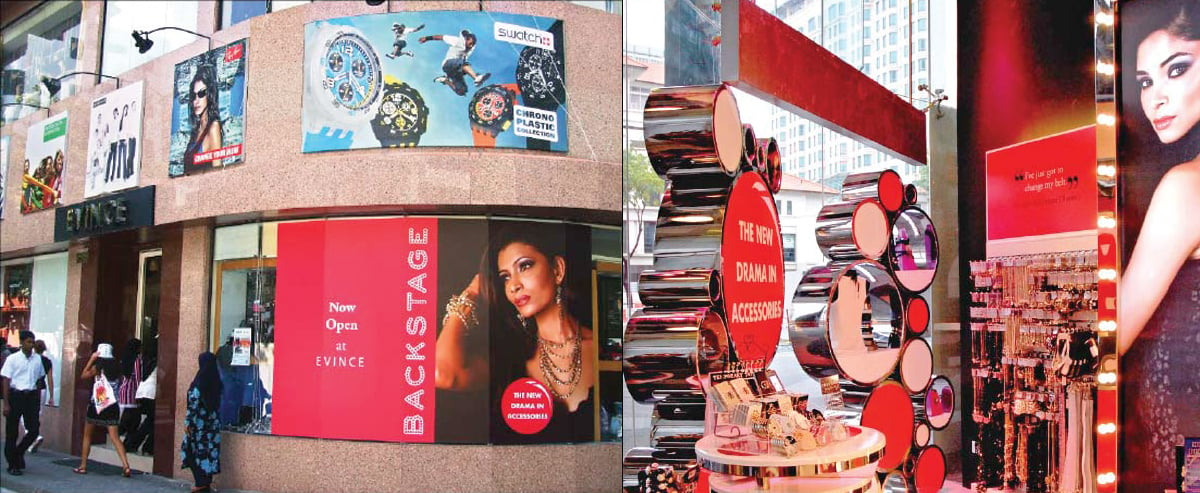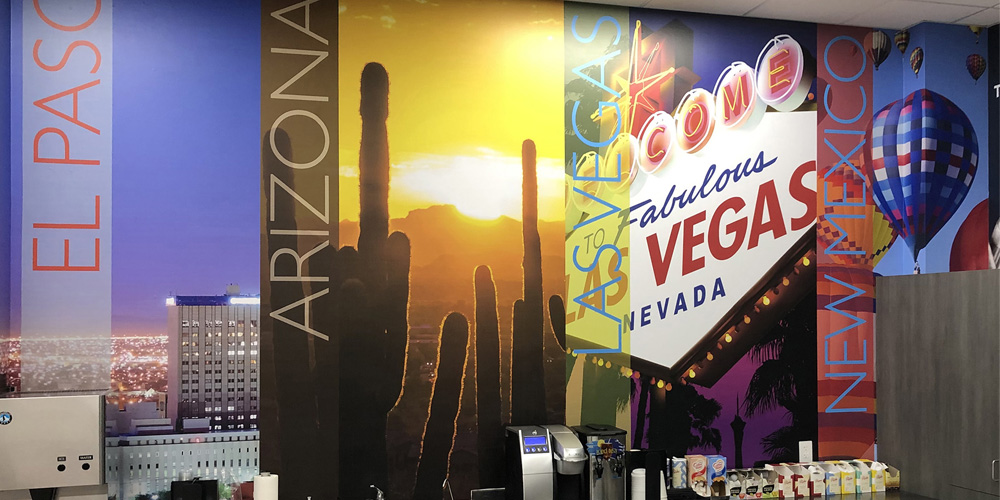What is Out-of-Home (OOH) Advertising?

Out-of-home (OOH) advertising thrives on one simple truth: people don’t live online. They commute, shop, socialize, and make decisions in the physical world every day.
Used strategically, out-of-home advertising positions your brand within these real-world contexts, capturing attention organically rather than demanding it digitally.
After all, the most memorable brands don’t just live on screens; they exist where life happens.
Here’s what you need to know about out-of-home advertising and how your brand can use this marketing tactic to attract attention, shape perception, and influence decisions.
- Common Types of Out-of-Home Advertising
- What Makes Out-of-Home Advertising So Effective?
- Best Practices for Out-of-Home Advertising Campaigns
Common Types of Out-of-Home Advertising
Out-of-home advertising refers to any ad that reaches people where they live, work, and move. There are several types of out-of-home advertising. Each format serves a distinct purpose and aligns with specific marketing goals.
Here are the most common types of out-of-home advertising.
Billboards and Outdoor Signage
Strategically placed in high-traffic areas, billboards, outdoor signage, and other large-format ads are extremely effective at long-term brand imprinting. For example, commuters passing by the same billboard every day are primed to subconsciously absorb your message. Billboards and outdoor signage can also guide immediate decisions. Near highways, they act as directional cues for businesses like restaurants or hotels.
For example, outdoor signage for the construction industry is an extremely effective way to ensure maximum visibility and connect passersby to your brand.

Transit Advertisements
Out-of-home ads on buses, trains, taxis, or transit stations reach people during downtime—when they’re waiting, commuting, or simply observing their surroundings. These placements are particularly effective in dense urban areas where public transit is integral to daily life.
Transit ads aren’t confined to buses, trains, or stations. Vehicle and fleet wraps allow your brand to travel directly into neighborhoods and business districts to achieve hyper-localized visibility.
For example, Smart Turf, an artificial grass manufacturer and installer, leverages fleet wraps as part of its out-of-home advertising strategy.
“Our fleet of Smart Turf-wrapped vans doubles as mobile showrooms, with artificial grass installed in the back. During installations and while on-site, our installers use truck magnets with branding and contact information for added visibility and reinforcement.” –Amy Nguyen, Marketing Director for Smart Turf
Vehicle wraps, also known as mobile billboard advertising, can even be utilized to drive traffic to local events and sales.
Location-Based Advertising
Location-based advertising places your brand where people are already primed to act or engage. These ads are often found in high-traffic venues like airports, shopping malls, and stadiums.
Transit advertisements, such as vehicle wraps, can also be used for location-based advertising to drive traffic to local events and sales.

The key advantage here is precision—targeting specific audiences in contexts that align with their behavior or intent.
For example:
- Airports are ideal for reaching travelers during extended wait times with messaging that matches their mindset such as luggage and travel accessories.
- Shopping centers are perfect for influencing purchase decisions at the point of sale with print marketing and signage that advertise nearby stores or promotions.
- Hotels, resorts, and event spaces offer prime opportunities to target guests with ads for local attractions or dining options.
Interactive Installations
Interactive installations use physical engagement through immersive displays to connect with audiences.
These installations work best in high-traffic locations where engagement can scale quickly—such as city centers, shopping districts, or movie theaters.
Beyond the immediate impact, they also generate word-of-mouth and social sharing as people talk about or post their experiences online.
For example, interactive games, photo opportunities, and characters promoting a movie effectively drive traffic to the next showing as well as spread the word about the movie through user-generated content online.
Digital Out-of-Home Advertising (DOOH)
DOOH uses digital displays in public places to show ads. Businesses can buy digital advertising inventory, much like they do with digital banner ads. This opens up possibilities for dynamic content and targeted messaging based on real-world events (like weather or traffic).
However, consumers are exposed to thousands of digital ads across screens daily, leading to "banner blindness" and digital ad fatigue. Further, permanently printed out-of-home ads stay in place for extended periods, ensuring repeated exposure to the same audience. In contrast, DOOH ads frequently rotate or display multiple messages within short time frames, reducing the likelihood of retention.
What Makes Out-of-Home Advertising So Effective?
Out-of-home advertising operates in the background of daily life, weaving your brand into the fabric of the environments people already trust.
It thrives in the spaces where decisions happen–on commutes, near stores, or at events–to make a major impact.
This ability to influence real-world actions in real time is particularly powerful in high-traffic environments. As mentioned above, airports are prime territory for capturing the attention of a captive audience:
- 84% of airport travelers are likely to visit a restaurant.
- 50% are likely to visit a clothing/accessories/jewelry store.
- 41% are likely to visit a consumer electronics store.
Beyond these immediate results, out-of-home advertising delivers long-term advantages beyond initial engagement.
Cost Efficiency
OOH ads offer one of the lowest costs per impression (CPI) and the highest engagement rates of any channel. With thousands of daily views generated without additional spending, they provide an affordable, scalable solution compared to digital ads, which require constant budget allocation.
- OOH campaigns can drive up to 4x more online engagements per dollar spent than digital banner ads.
Credibility and Trust
Consumers are increasingly skeptical of online advertising in a digital world marked by short-lived content, spam, and scams. Out-of-home ads are a key part of modern integrated marketing strategies due to their ability to reinforce brand legitimacy in the physical world.
The Halo Effect
The credibility of out-of-home advertising doesn’t stop at physical spaces. Seeing your brand prominently in trusted environments creates a halo effect that makes online ads and social media posts feel more legitimate and trustworthy by association.
Best Practices for Out-of-Home Advertising Campaigns
While out-of-home ads can't be skipped or scrolled past like digital ads, they can be 'tuned out' by people who are distracted or uninterested. For this reason, strong creative execution is a must for successful out-of-home advertising campaigns.
Here’s what matters most.
Context Is Everything
It’s crucial to understand the mindset of the audience at the specific location and time they see an out-of-home ad. Think about the customer journey and how your message fits into their current needs and motivations.
For example, an ad for premium luggage placed in an airport lounge is relevant and timely. Travelers in this setting are already thinking about their journey, making them more receptive to products or services that enhance their travel experience.
Contrast this with placing the same ad in a suburban grocery store parking lot. While the product remains the same, the context doesn’t align with the audience’s immediate priorities, reducing its impact.
Keep it Simple
Out-of-home advertising ads have seconds to make an impression. Think about how the human brain processes visual information – simple, high-contrast images are processed more quickly and effectively.
Overcomplicated designs or cluttered messaging fail to connect. Stick to bold visuals, clear typography, and concise copy (ideally seven words or fewer).
Learn more tips and best practices for large-format printing and OOH advertising success here.
Emotional Resonance
Ads that evoke humor, curiosity, or empathy will likely stick with viewers. Even a subtle touch of wit or a thought-provoking image can be more effective than a straightforward product pitch. However, this must be done strategically and carefully considering the target audience. Disruption for the sake of disruption can backfire.
Precision Drives Results
 Out-of-home advertising succeeds when every detail is executed flawlessly.
Out-of-home advertising succeeds when every detail is executed flawlessly.
Viewing distance, font legibility, color consistency, material durability, and environmental context are all critical factors in the success of out-of-home advertising.
Artisan Colour brings the technical expertise and industry insight needed to turn your creative vision into a reality that performs.
Whether commanding attention in high-traffic areas or reinforcing brand trust through impeccable design, we ensure your ads deliver measurable impact where it matters most.
Ready to activate your OOH advertising strategy with precision?
Contact our team of experts today to get started on your next project.






